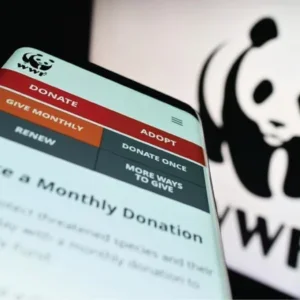The name ‘Lanxess’ was taken from the French ‘lancier’ meaning to launch, and the end of the English word ‘success’. Lanxess, the new company comprising leather business and 16 other units, began operating independently on July 1, 2004. However, until their stock market flotation, Lanxess remain under the umbrella of the Bayer AG holding company. It is hoped that the new status will give the company greater flexibility, enabling them to adapt quickly to the changing needs of the market.
Specialising in the production of finishing agents for the leather industry, Lanxess employ approximately 20,000 people worldwide, 11,000 of whom are based in Germany. They have 52 production sites in twenty countries from Australia to Argentina and achieved external sales of €5.8 billion in 2003.
Dr Bernd Wehling believes that ‘The new company will be better able to optimise its use of resources in a targeted way, focus on its core business and act more flexibly on the market.’ He added that clients would ‘continue to be able to purchase established products for leather in the same high quality and under the same brand names as before.’
Lanxess have a partnership with Rohm and Haas in the USA, who are responsible for the research, development and production of a number of speciality chemicals, which are then marketed by Lanxess. In addition, Lanxess have a sales co-operation agreement with Atlas Refinery in the USA who manufacture fatliquoring agents. This agreement has proved successful in a number of countries.
In response to China’s increasingly important role in the leather industry, Lanxess have increased their presence in China. In addition to the exisiting facility at Qingdao, the Wuxi production plant, situated 150km north east of Shanghai, has been expanded and the technical competence centre has been doubled in size.
Lanxess’ commitment to research and development is reflected in their state of the art facilities in Leverkusen, among the best-equipped in the world. They have recently invested €400,000 in the latest equipment for the applications department including a modern spraying unit with high performance dryer, a toggle dryer with expanding frame, a through feeding embossing machine and a buffing line with dust removal machine. Lanxess even produce their own wet-blue to ensure consistent testing conditions. A dyestuff analysis laboratory was set up recently in Santa Croce sull’ Arno, Italy.
Research and development is targeted at specific areas of the leather business. Specialists in the company’s leather business unit have many years of experience and Lanxess recently created a dedicated Automotive Task Force. This is comprised of 30 technicians including staff from US partners Rohm and Haas working to develop strategy and markets in order to meet the demands of an increasing number of clients who are involved specifically in automotive leather. To this end the company have invested €4,000 in renovating and enlarging the technical department dedicated to this sector.
Lanxess offer a comprehensive range of speciality products for the manufacture of high quality leathers: a range of products designed to cater for the tanner’s every need (more details are provided in the listing of products). The new year saw the stock market floatation on January 31, 2005, and the new supervisory board was elected at the first annual Lanxess’ stockholders meeting.
NEW RULES MEAN NEW PRODUCTS
In response to new European legislation banning the use of nonylphenol and ethoxylated nonylphenols, which came into force in January 2005, Lanxess have developed a biodegradable degreasing agent, Baymol AN 90. This product is suitable for use in all processes from beamhouse to retannage. It can be used in the same range of applications as nonylphenol products and is suitable for the degreasing of all types of pelts and as a wetting agent.
Baykanol Licker LC is a new lecithin based fatliquoring agent for use in retannage of white and lightfast leathers.
Lubritan MT is a softening polymer which gives good softness, fullness and resistance to heat yellowing, as well as water repellency. It can be used in the retannage of garment, shoe nappa, and furniture upholstery leather and is also suitable for use in the production of washable leather for sports shoes.
Lubritan RF is also a softening polymer which gives the leather fullness, softness and low water absorption, in addition to a tight grain. When used in the retannage of softy and upper leathers and in the production of washable leathers, it gives a soft full handle.
Levacast. Reacting to increased global demand for short-life leathergoods, eg for cheap shoe uppers, Lanxess’ leather specialists have developed innovative processes which enable split leathers to be turned into high quality articles. The Levacast range of products for split coating can be tailored to the client’s specific requirements by Lanxess’ leather specialists.






